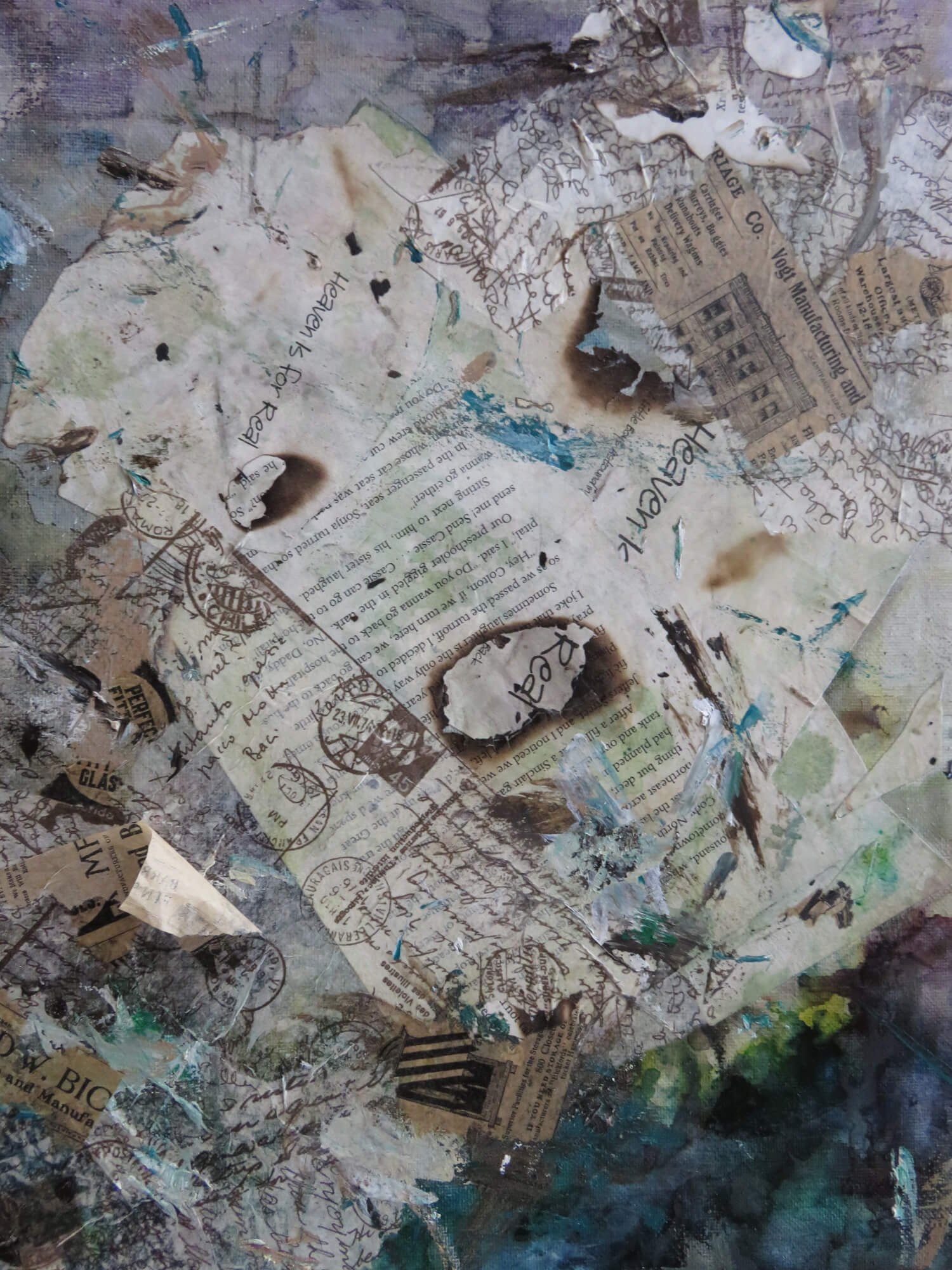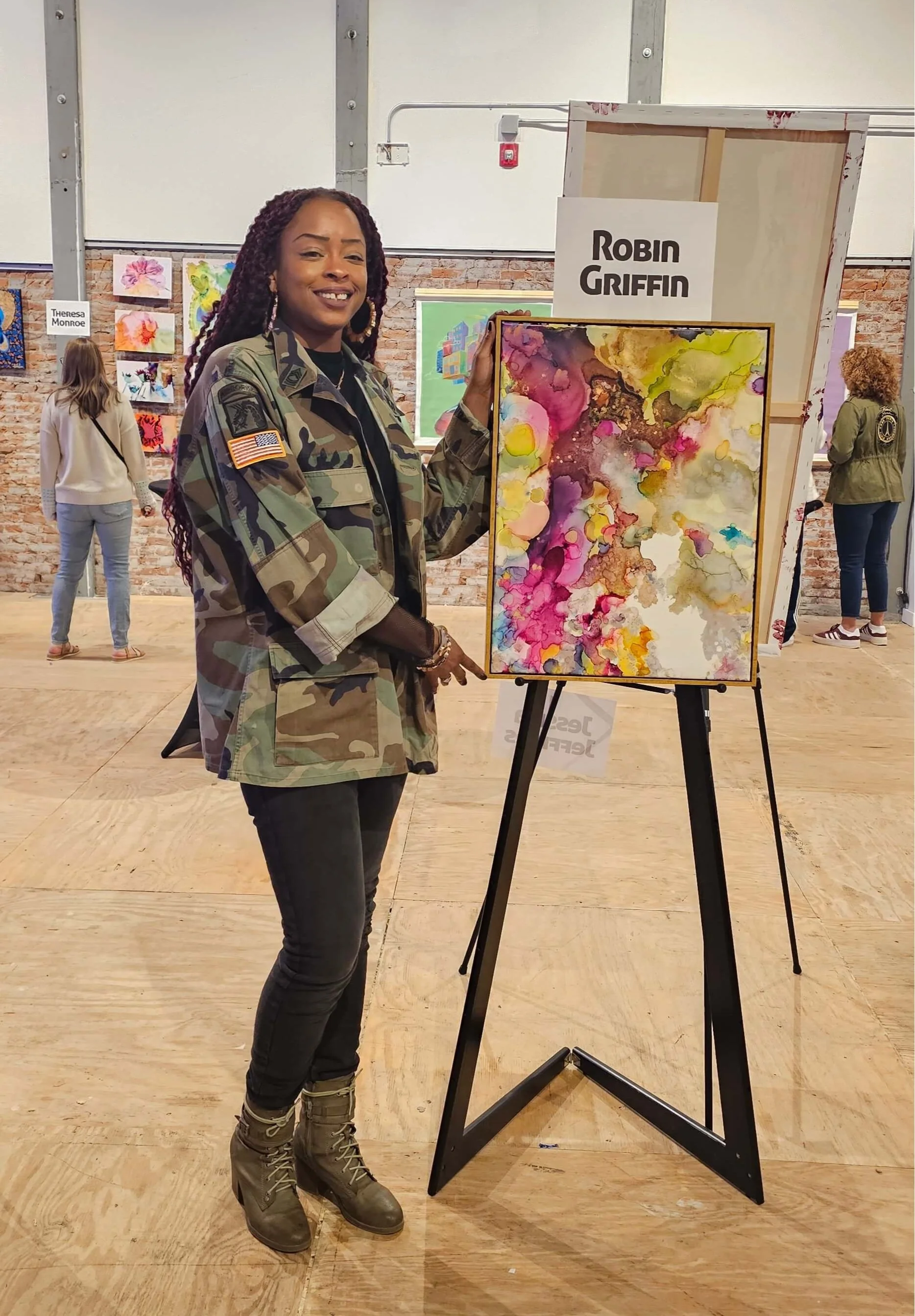Robin BB Griffin
Robin is an abstract mixed media artist whose work explores emotion, symbolism, and the unseen connections between human experience and spirit. A member of the Pittsburgh Society of Artists, Robin's practice is rooted in intuition and storytelling—transforming grief, healing, and synchronicity into vibrant, expressive compositions.
Her creative journey includes community collaborations, mural projects, and public art installations with organizations such as Catapult Pittsburgh. She is currently seeking opportunities to create large-scale abstract works for restaurants, small businesses, and corporate spaces—bringing color, movement, and meaning into shared environments.
Contact
http://www.bobbiebonita.com
Robin.griffin2686@gmail.com
@robinbonita
Interview
What inspires your art practice and keeps you motivated?
My art practice is deeply inspired by life itself—the layers of experience, relationships, dialogue, and even the things left unsaid. I’m drawn to the emotional undercurrents that shape our human stories—grief, pain, love, synchronicity—and how they manifest as symbols or abstract forms. Creating helps me process and translate those feelings into something visual and tangible.
What keeps me motivated is the constant evolution of my painting voice. Every piece feels like a conversation between where I’ve been and where I’m going as an artist. The more I explore, the more I discover—about color, texture, emotion, and ultimately, myself. That ongoing growth and self-discovery is what pushes me to keep creating.
How does your mission as an artist influence the work you create?
My mission as an intuitive artist is to translate feeling into form. I let color, texture, and movement speak where words can’t. Each painting begins with emotion—a pulse, a memory, a whisper of something unseen—and unfolds through trust in the process. The colors I use are like energy fields, mapping out moments of grief, joy, healing, and transformation.
Painting intuitively allows me to move beyond what’s literal and touch something deeper—a shared human experience. My hope is that when someone stands before my work, they feel a sense of connection or recognition, as if it’s reflecting a piece of their own inner world back to them.
Can you share a key part of your creative process that helps you stay focused?
My creative process is very intuitive—I like to enter what I call “flow sessions,” where I just respond to the movement of color and shape in the moment. It helps me stay grounded and present, almost like a form of meditation. The way the paint moves or settles often feels like a reflection of what’s happening internally.
I’ve also learned to trust divine timing—both in life and in my art. Some pieces come together quickly; others take their time to reveal themselves. Trusting that rhythm keeps me consistent because I see every session as part of a larger unfolding. It’s less about forcing creativity and more about showing up, staying open, and letting the work guide me where it needs to go.
What mindset tip do you rely on to overcome challenges in your art career?
My mindset is to fail forward. I’ve learned to see challenges as part of the creative rhythm—sometimes things fall apart so something new can take shape. Every misstep teaches me something about trust, patience, and process. As an artist, I don’t see failure as an ending but as movement—a necessary layer in the larger picture. It’s all part of becoming.
How do you hope your art impacts the world or your community?
Community is where my art breathes. When I paint murals or collaborate on public projects, I feel like I’m channeling the collective energy of a space—its stories, emotions, and dreams. It’s my way of weaving connection and hope into the environment, transforming walls into mirrors that reflect the spirit of the people who move through them.











